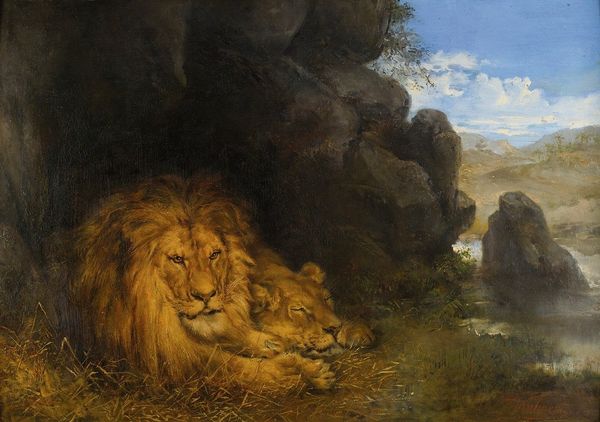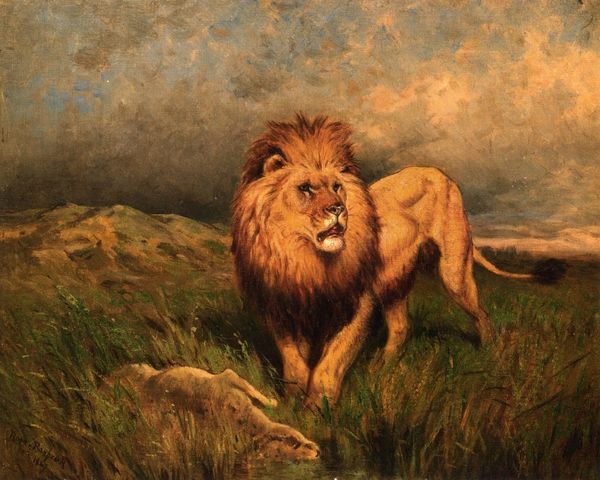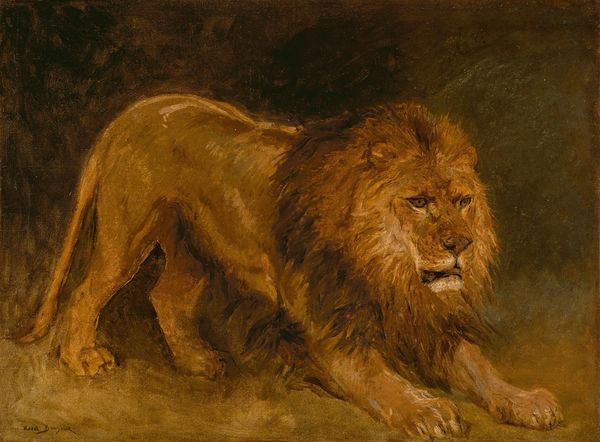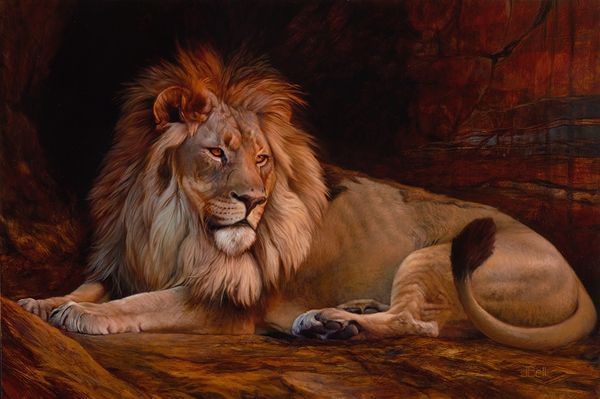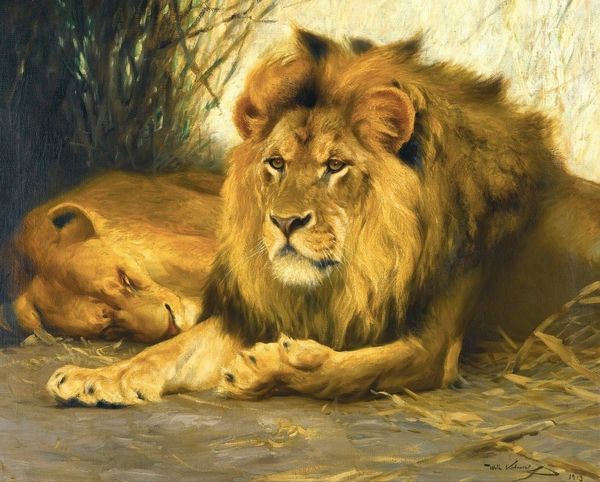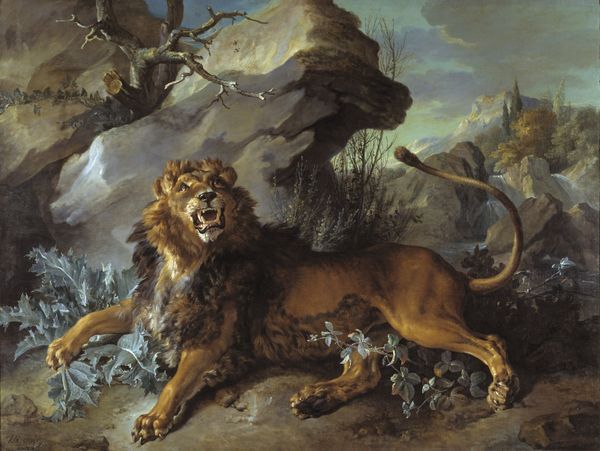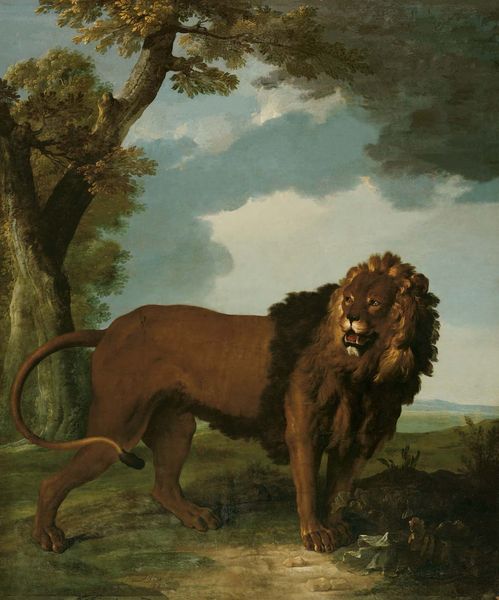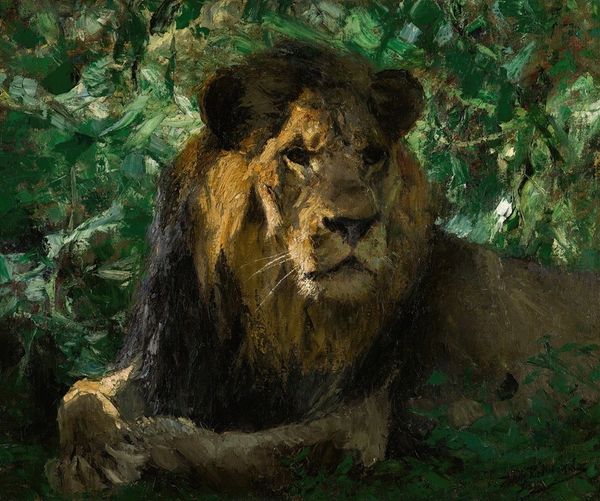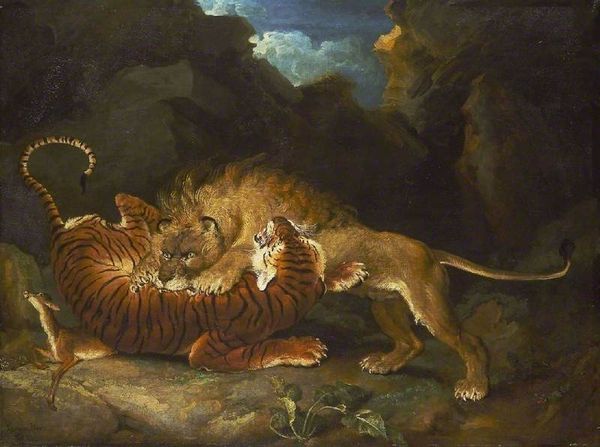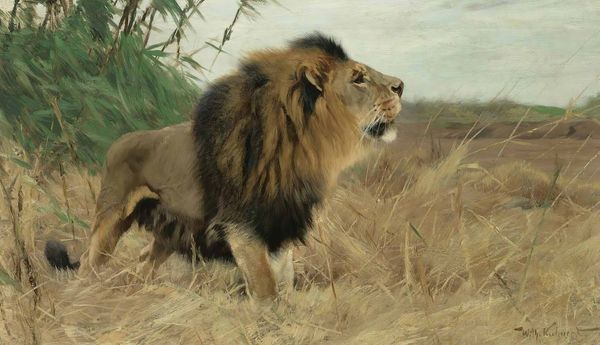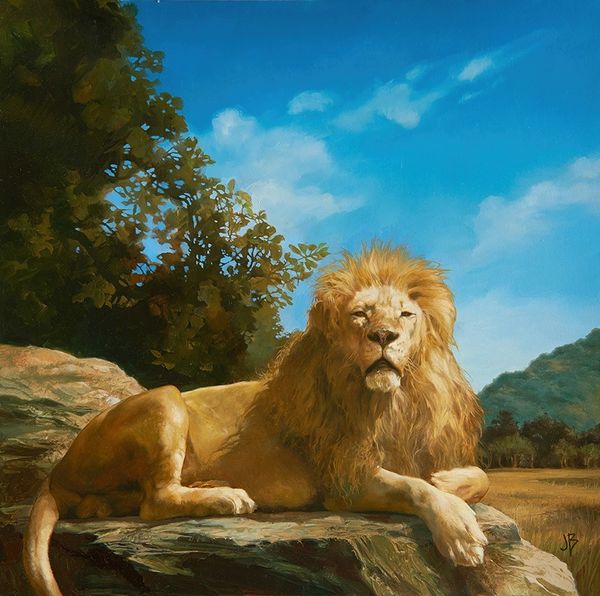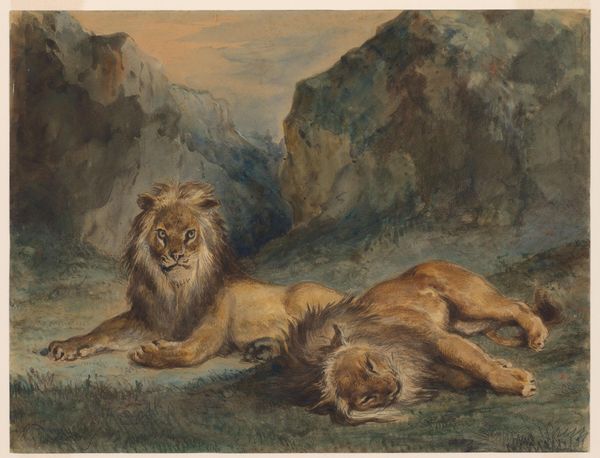
Copyright: Public Domain: Artvee
Editor: So, we're looking at George Stubbs's "A Lion Attacking a Stag," painted around 1765, using oil. It's…intense. The stag's expression is haunting, and the lion seems almost… triumphant. How do you interpret this work? Curator: It's a potent image, isn't it? Think about what was happening in the mid-18th century. The Enlightenment’s emphasis on reason clashed with burgeoning Romanticism’s focus on emotion and the sublime. Stubbs, while known for scientific accuracy, particularly in his animal anatomy studies, couldn't escape the era's anxieties about power, vulnerability, and the ‘natural’ order. Editor: Natural order? Curator: Absolutely. Consider the painting not just as a depiction of animal predation, but as an allegory. The lion, a symbol of British imperial power, dominating and, arguably, exploiting its resources – the stag, representing the land and its native populations. Does the stag's visible anguish resonate differently through that lens? Editor: I see. It's not just survival of the fittest, it’s a commentary on colonial power dynamics…The light seems to isolate the pair, too. Was Stubbs intentional with the setting, emphasizing them and excluding anything or anyone else? Curator: Precisely! The almost theatrical lighting isolates the act, forcing us to confront the raw power dynamics at play. Stubbs isn't merely presenting a scene; he’s prompting a visceral response to the themes of domination and suffering. We must remember to consider how this scene perpetuates certain ideologies that naturalize violence and power imbalances. Editor: That really changes my perspective. I came in seeing a dramatic animal painting, but I'm leaving with a powerful symbol of human history and the dynamics of power. Curator: Art can do that – disrupt assumptions and make us question the systems in place.
Comments
No comments
Be the first to comment and join the conversation on the ultimate creative platform.
